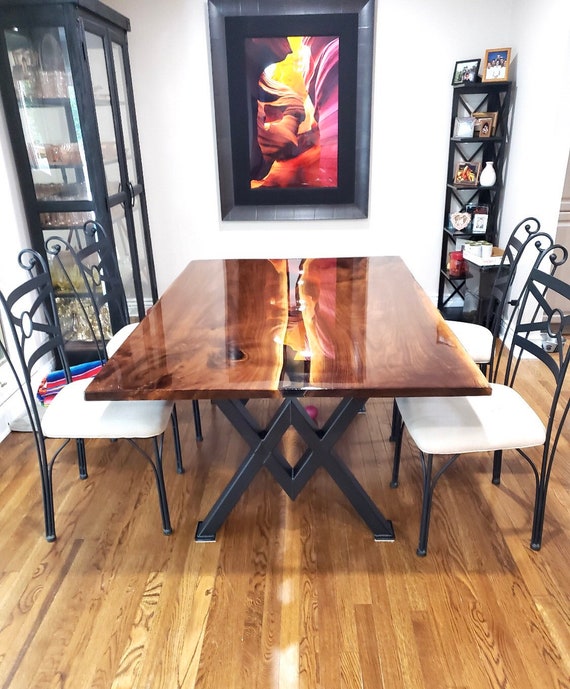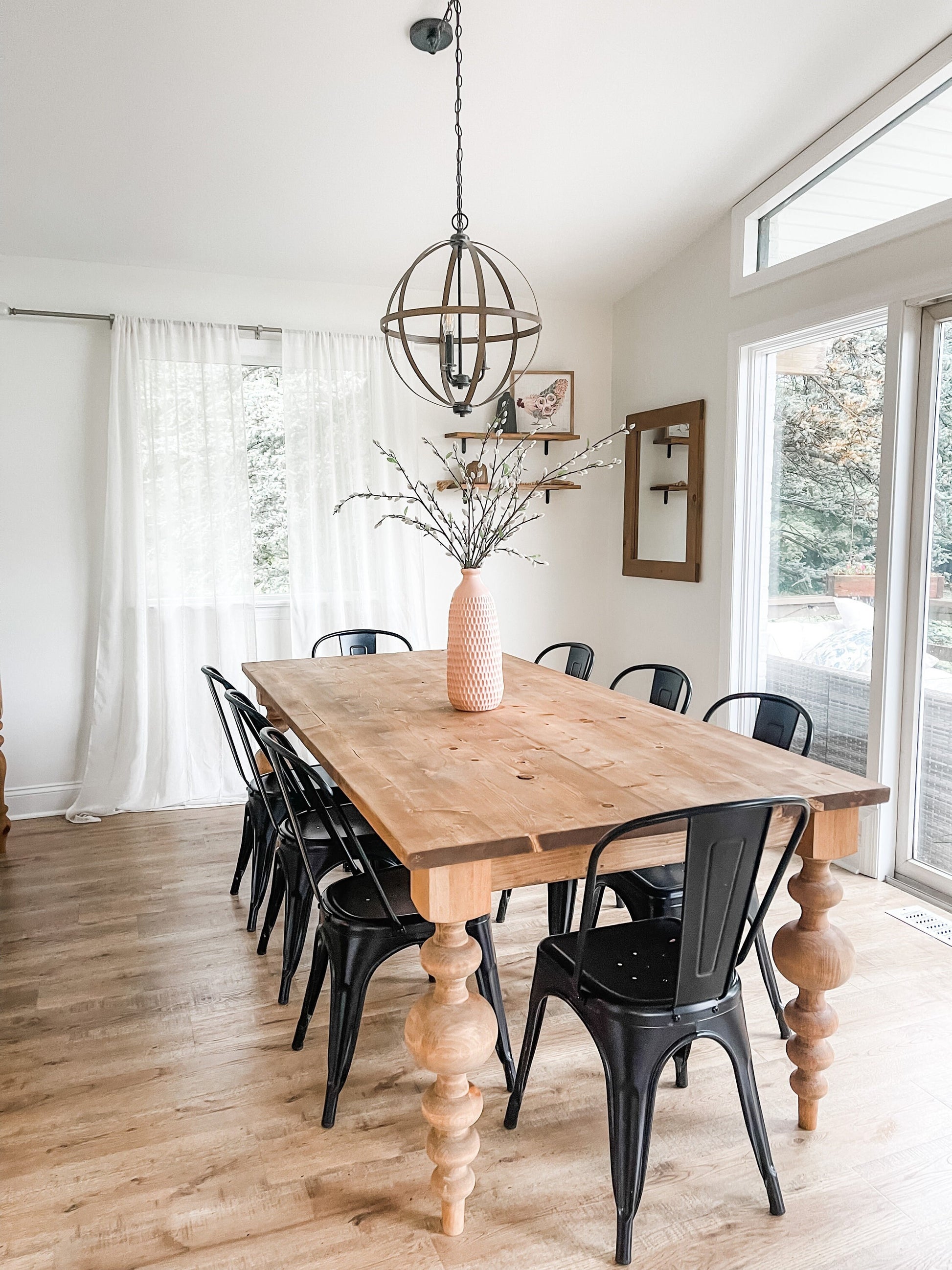The Best Materials for Durable and Elegant Dining Room Table Legs
The Best Materials for Durable and Elegant Dining Room Table Legs
Blog Article
From Conventional to Modern: Discover the Suitable Dining-room Table Legs for Your Style
The option of dining-room table legs plays a critical role in defining the total character of your space, connecting the void in between typical workmanship and contemporary aesthetics. While classic styles such as cabriole and transformed legs stimulate a sense of timeless refinement, contemporary styles like hairpin and geometric options offer an opportunity for striking visual interest. Examining the right balance between these styles calls for a nuanced understanding of your existing design and personal preference. As you consider these components, the concern remains: exactly how can you perfectly integrate these varied leg designs to develop an unified dining experience?
Comprehending Table Leg Styles
The range of dining-room table leg styles can substantially influence both the looks and performance of the room. Each leg style contributes one-of-a-kind aesthetic aspects and practical features, catering to diverse design choices and usage requirements. Recognizing these designs is crucial for choosing the ideal table that straightens with your total indoor style vision.
For circumstances, tapered legs offer a tidy, classic appearance that can enhance an area's sophistication, while stand bases supply stability and make best use of legroom, making them perfect for smaller sized areas. Hairpin legs, a trademark of mid-century contemporary design, present an industrial style, permitting a ventilated, open feel. Likewise, trestle legs evoke rustic beauty, giving durable assistance and a feeling of timelessness.
Wood legs can bring heat and appearance, whereas metal options often convey a streamlined, contemporary ambiance. Eventually, understanding table leg styles is vital for producing a natural eating location that mirrors personal design while making certain usefulness and comfort.
Typical Table Leg Options
When selecting eating room table legs, standard options frequently symbolize classic style and workmanship. These layouts mirror a rich heritage and a dedication to quality, making them optimal for those who appreciate traditional aesthetic appeals.
One of one of the most iconic conventional leg styles is the cabriole leg, characterized by its stylish bent form. This style usually includes ornamental carvings and is most commonly found in Queen Anne and Chippendale furniture. An additional popular choice is the turned leg, which boasts a collection of smooth, rounded forms that supply a classic appearance while keeping stability.
Moreover, the straight leg, while simple, uses a basic and sturdy structure that can mix seamlessly with a range of tabletop designs. For those attracted to ornate detailing, claw-and-ball feet legs stimulate a sense of splendour and can work as a sensational focal factor in any type of eating space.
Lastly, pedestal bases, although not purely legs, provide an alternative standard alternative that enables for ample legroom and can be beautifully sculpted. Each of these typical leg designs adds to the general ambiance of a dining room, weding function with visual charm.

Modern Table Leg Designs
Modern table leg layouts offer a diverse series of styles that emphasize learn the facts here now innovative products and tidy lines. These designs usually prioritize functionality while working as striking centerpieces within an eating room. Minimalist visual appeals are prevalent, with legs crafted from products such as steel, glass, and crafted wood, which add to a modern and ventilated feeling.
One preferred layout is the hairpin leg, defined by its slim, tapered structure that offers security without overwhelming the table top (dining room table legs). This design is often located in mid-century modern furniture and can easily match numerous eating table forms. An additional pattern is making use of geometric shapes, where legs may tackle angular or asymmetrical forms, including aesthetic passion and a touch of artistry

Blending Styles for Special Rooms
Frequently, property owners look for to develop unique eating areas that mirror their personal design by mixing numerous design elements. This technique enables the incorporation of varied aesthetics, leading to an unified yet distinct environment. Coupling a rustic wooden table with streamlined, modern steel legs can develop a captivating More Bonuses contrast that elevates the area's total charm.
Additionally, integrating vintage table legs with contemporary table tops can evoke a sense of history while maintaining a modern-day perceptiveness. Such mixes not only display individual preference however likewise motivate creativity, permitting homeowners to curate a space that really feels both individual and inviting.
Shade plays an important duty in this blending process; picking table legs that match or comparison with the existing color design can enhance aesthetic interest. Whitewashed legs can soften the daring of a dark table surface, developing a balanced visual.
Tips for Picking the Right Legs
Choosing the right table legs is essential for attaining both performance and aesthetic charm in your eating space. Begin by thinking about the general style of your space. Typical settings gain from legs that feature intricate makings or transformed layouts, while contemporary spaces may require sleek, minimalist designs.
Following, analyze the elevation and stability of the legs. dining room table legs. Standard eating tables range in between 28 to 30 inches in elevation, so make certain the legs complement this measurement for convenience. Additionally, robust products, such as wood or metal, can enhance security and long life
Examine the leg shape also-- choices include right, tapered, or pedestal layouts. Straight legs supply a traditional appearance, while tapered legs can add a touch of style. Pedestal bases offer sufficient legroom and are ideal for smaller sized rooms.
Conclusion
In summary, selecting the excellent dining space table legs requires careful consideration of both standard and contemporary styles. Traditional choices such as cabriole and transformed legs provide ageless style, while contemporary layouts like barrette and geometric forms provide a contemporary touch. By integrating leg style, elevation, and material with the general design, a cohesive and inviting environment can be achieved. Eventually, the selected table legs should show the wanted visual, improving the eating his comment is here experience within the area.
The selection of eating room table leg designs can substantially influence both the aesthetic appeals and performance of the area. Eventually, comprehending table leg designs is crucial for developing a natural dining area that reflects personal design while ensuring usefulness and convenience.One of the most legendary typical leg styles is the cabriole leg, defined by its graceful bent form. Straight legs offer a traditional appearance, while conical legs can include a touch of sophistication.In recap, picking the ideal dining area table legs calls for careful consideration of both modern and conventional designs.
Report this page